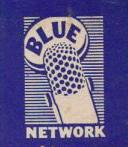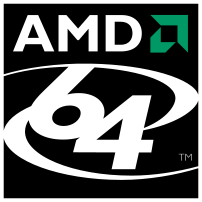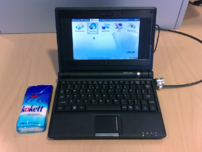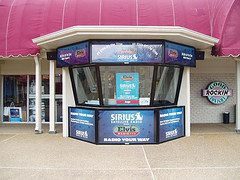
- Image via Wikipedia
Sometimes, we just want to share some news, without much fanfare. Here are some of the little bits we’ve collected over the last two weeks you might find interesting.
- Microsoft has clarified its position on third-party codecs in Windows 7. The problem is that in Windows 7, if the video you want to watch is naively supported by Windows, there’s no easy way choose a different codec. You’ll be able to add third-party support for a codec not supported initially, but replacing the defaults will apparently be difficult. On a positive note, we are certain someone will come up with an easy codec tweaker program to solve this, bt Microsoft clearly isn’t concerned.
- MythBuntu is testing the beta of its Jaunty Jackalope 9.04 version. MythBuntu is a version of Ubuntu that is bundled with the software and setup for the MythTV suite, which is a Linux-based DVR.
- Disney may end up with a stake in Hulu, the online streaming site, in exchange for adding ABC(which they own) content to the site. More Disney content may has been discussed but it centers on ABC; other possibilities could include ESPN, and, if not the Disney Channel, some offshoots of it. We’ll see what comes of that.
- If not that, Youtube and Disney have announced a deal for the launch of multiple ad-supported U.S.-only channels featuring content from ESPN and Disney/ABC Television. Previews are up now, and the ESPN channel will launch mid-April, ABC in mid-May. There is no deal with Youtube on full episodes though links will be made back to the various channel homepages where additional content may be available.
- Speaking of online content, the Times reported last week that some broadcasters and cable networks are worried that their push to put some of their programs online may be threatening the revenue they get from showing it on TV. This is why the cable companies are getting involved, by offering the content online people demand, but only as part of their subscription process. The networks may license the content to other organizations on a more ala carte basis, but only if their revenue is maintained.
- ZeeVee released a retooled Internet video browser. Named Zinc, it appears to be a competitor to Boxee, the open-source media center/video browser. It works for Windows and a Mac version is scheduled for sometime this month.
- Cox Communications is planning on rolling out tru2way set top cable boxes starting this summer. For those of you unfamiliar with the technology, tru2way is meant to expand the Cablecard system to allow a full range of options, including program guide and on demand, on televisions equipped with the techology, which includes a Cablecard for decryption. Unfortunately, like Cablecards, there is a lack of TVs equipped for this technology.
- Hulu is now the fourth largest video site in the U.S., as statistics for the month of February prove. Since last May, Hulu has grown the number of videos it streams by 277 percent, and its audience has grown 410 percent.
Related articles by Zemanta
- Report: Disney in talks to bring content to Hulu (macworld.com)
- Disney in Talks with YouTube (appscout.com)
- TV Is Dead: ABC and ESPN Might Be Coming to Hulu (tsurch.com)
- Rumor: Disney Looking to Join Hulu (appscout.com)
- ABC/Disney Considering Hulu (entertainment.slashdot.org)
- Open Source Media Center Apps Are Growing Up (ostatic.com)


![Reblog this post [with Zemanta]](http://img.zemanta.com/reblog_e.png?x-id=50b70806-18c8-4eda-a292-09918240b990)


![Reblog this post [with Zemanta]](http://img.zemanta.com/reblog_e.png?x-id=475f7f45-657c-4874-a241-6eb23bb06c6f)


![Reblog this post [with Zemanta]](http://img.zemanta.com/reblog_e.png?x-id=a93c807b-8365-402e-b3ce-5543c20edc4f)


![Reblog this post [with Zemanta]](http://img.zemanta.com/reblog_e.png?x-id=8c166d5d-3a16-4f5f-8c83-3a512406430b)


![Reblog this post [with Zemanta]](http://img.zemanta.com/reblog_e.png?x-id=666bb618-e145-4a01-aae8-30df4b8e3a92)

![Reblog this post [with Zemanta]](http://img.zemanta.com/reblog_e.png?x-id=243f475f-6e20-4332-adf5-5a7a1880e3d2)


![Reblog this post [with Zemanta]](http://img.zemanta.com/reblog_e.png?x-id=93eec8b0-b701-4b22-9011-2beefe7f957d)


![Reblog this post [with Zemanta]](http://img.zemanta.com/reblog_e.png?x-id=6bbe6da7-c82e-4ef5-9369-ca7adc5dc58a)
![Reblog this post [with Zemanta]](http://img.zemanta.com/reblog_e.png?x-id=e09b64b5-6996-4861-9848-7954d40f32dd)


![Reblog this post [with Zemanta]](http://img.zemanta.com/reblog_e.png?x-id=f658d183-304a-4f19-9989-94569ef1c135)